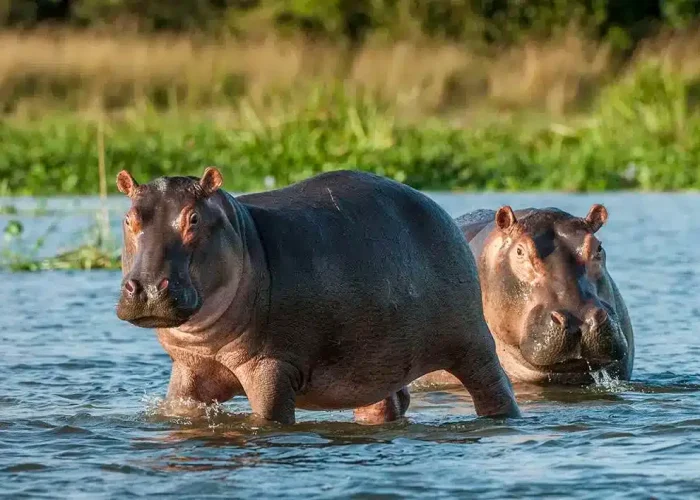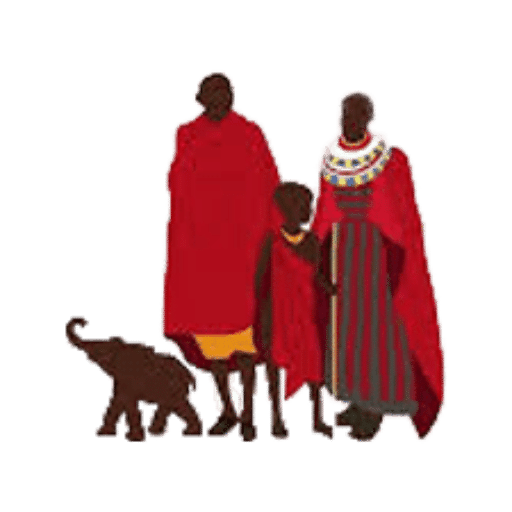Northern Circuit
Overview
The Northern Circuit in Tanzania is a popular tourist route that encompasses some of the country’s most iconic and well-known destinations for wildlife safaris and cultural experiences. It is renowned for its stunning landscapes, diverse wildlife, and rich cultural heritage
The Northern Circuit offers a wide range of experiences, from traditional game drives to cultural interactions with the local Maasai people. It is an ideal destination for wildlife enthusiasts, photographers, and those seeking an authentic African safari experience.
Wildlife Safari and Bird Watching
Arusha Town/city, Arusha National Park, Lake Manyara National Park, Tarangire National Park, Serengeti National Park, Ngorongoro Conservation Area and Mkomazi National Park
SERENGETI NATIONAL PARK
Serengeti National Park is one of the jewels in Tanzania’s wildlife crown, protected since 1921, and declared a National Park in 1951, the Serengeti is a UNESCO World Heritage Site and International Biosphere reserve. Lying between Masaai Mara Reserve in Kenya to the north, Ngorongoro Conservation Area to the south-east and extending close to less than 10kms off the shore of Lake Victoria to the west, Serengeti is the third largest National Park in Tanzania covering an area of 14,763sqkms, only Nyerere and Ruaha National Parks in southern Tanzania are bigger with 30,000 and 20,370sqkms respectively.
The name Serengeti, comes from the Maasai word ‘Siringeti’ referring to an Endless Plains. As you stand on the south-eastern plain you experience this vastness and can experience one of the greatest concentrations of plains animals left on earth. Serengeti is home to the world’s largest populations of wildebeest, zebra, buffalo, eland, hartebeest, lion, cheetah, hyena, and a wide variety of antelopes. Also is the home to the world’s last remaining large mammal migration, the Great Migration, which is one of the Seven Natural Wonders of Africa.
Best time to visit: Following the Wildebeest migration from Serengeti National Park to Maasai Mara National Reserve, the best time is December to July and to see the predators the best time is June to October.



NGORONGORO CONSERVATION AREA
‘The eighth wonder of the world’ is the clarion call of brochures, and for once, they’re not far wrong. The spectacular geography of the 8,292sq. km NGORONGORO CONSERVATON AREA occupies the volcanic highlands between the Great Rift Valley’s western escarpment and the Serengeti Plains. It’s the product of the volcanic upheavals that accompanied the formation of the Rift Valley, and it’s varied habitats virtually guarantee sightings of ‘the big five’ elephant, rhino, leopard, lion, and buffalo. For animals, the conservation is a haven, while for tourists, it’s close to heaven.
Ngorongoro Conservation Area is a protected area, a UNESCO World Heritage Sites and International Biosphere reserve which means is the only conservation where people {the Masai} and livestock and wildlife coexist and share the same protected habitat. The craters of Ngorongoro and Empakai are reserved exclusively for wildlife, while the rest of the Conservation Area is shared by wildlife, people and their livestock. The Maasai, the main residents of Ngorongoro, are polygamous pastoralists who live in family groups in homesteads commonly referred to East Africa as ‘Boma’ in Swahili, or ‘Nkang in their own Maa language. They move widely with their herds of cattle, goat, donkey, and sheeps, in search of green pastures and water.
Ngorongoro crater, which is the main attraction in the area, is the largest intact volcanic caldera in the world. The caldera measures between 16 and 19km across and has an area of 280sq.km. its heavily forested rim rises 610meters above the caldera floor to an elevation of 2,286meters. Its grasslands, swamps, glades, lakes, and forests contain vast numbers of herbivores, together with Africa’s highest density of predators. Game viewing needless to say is phenomenal, as is the abundance of photo opportunities, the crater’s deep, bluish-purple sides providing a spectacular backdrop to any shot.



LAKE MANYARA NATIONAL PARK
Stretching for 50 km along the base of 600 m high escarpment of the African Rift Valley, Lake Manyara National Park offers visitors a microcosm of the Tanzania safari experience. Despite the park’s small size, its vegetation is diverse, ranging from savanna to marshes and acacia woodland, enabling it to support a remarkable variety of habitat. the main habitats include the shallow soda lake itself which occupies two-third of the park’s total 330sq. km.
The most famous spectacle in the park is the tree-climbing lions, which are occasionally seen along branches of acacia trees. Other animals found in the park include hippos which can be observed at closer range, elephants, leopards, impalas, wildebeests, giraffes, buffaloes, baboons, vervet monkeys, ostriches. Lake Manyara National Park is a game photographer’s paradise, over 390 bird species found in most savanna and river habitats in East Africa. Common water birds to be seen here are pelicans, ibis, hammerkops, Egyptian geese, fish eagle, and the migratory flamingoes, which arrive in hundreds of thousands creating one of Africa’s great natural sights over the soda lake.
Best time to visit: from December to March and June to October (dry seasons)
Activities/Visits/Excursions: Lake Manyara Treetop Walkway , Bird watching ,Day and night game drives ,Canoeing ,Nature walks and Visit Maasai bomas



TARANGIRE NATIONAL PARK
Tarangire National Park, is a classic dry-season destination, particularly between August and October, when it has one of the highest concentrations of wildlife of any of the country’s parks and is very popular for day trips from the town. The Tarangire River after which the park is named, is the primary source of permanent fresh water for wild animals in the Tarangire ecosystem during the annual dry season when thousands of animals concentrate in Tarangire National Park from surrounging wet-season dispersal and calving areas.
Tarangire contains pretty much every animal species you’re likely to see on safari, with the exception of Rhino, its major attractions are Elephants, of which the park has plenty even when the migration is outside the park, Baobabs, weird and hugely impressive trees, that can live for several thousand years, providing wonderfully silhouettes for sun set photographs. Many animals including elephants, stays in Tarangire all year round, as do significant numbers of buffaloes, giraffes, zebras, ostriches, warthogs, waterbucks, gazelles, impala, gerenuk, lesser kudu, and the beautiful fringed-eared oryx. Also present are predators, lions can usually be viewed lazing around by the river and, with luck, you might also catch sight of a leopard, cheetahs exist but are rare, as the long grass doesn’t favour their hunting technique, and you’d be lucky to see hyenas, whether spotted or striped. You may be lucky to spot the tree-climbing python, for which the park is famous, or the greater kudu and the roan antelope which are rare species in northern Tanzania. The park is also heaven for bird enthusiasts over 550 bird species have been recorded in the park.



ARUSHA TOWN/CITY
Cool, lush and green, Arusha is one of Tanzania’s most developed and fastest-growing towns. Nestled among the lush foothills of Mount Meru,{fifth-highest mountain in Africa}, the booming town of Arusha is northern Tanzania’s major commercial Centre and the country’s undisputed safari capital to the world famous game sanctuaries of Serengeti, Ngorongoro, Lake Manyara and Tarangire.
The town of Arusha is the administrative seat of the East African Community made up of Tanzania, Kenya, Uganda, Rwanda, and Burundi, is at 1350 to 1450 above sea level and positioned at the centre of African Continent in north-south direction, that is to say 3,500kilometres away from both Cape Town in South Africa and Cairo in Egypt.
Arusha offers a vast range of excellent opportunity for authentic souvenirs shopping, including the Makonde woodcarvings, bright TingaTinga paintings, Batiks, Maasai bead jewellery. Tanzanite, the native gemstone of Arusha and one of the most beautiful and exciting gems to come from Africa, is sold in all gemstone shops in town alongside other locally mined stones like Ruby, Rhodolite, and Tourmaline. Tanzanite was first discovered in 1967, some 40km to the south-east of Arusha at Mererani and is the only commercially viable source for Tanzanite in the World. The name Tanzanite was named after Tanzania.



ARUSHA NATIONAL PARK
Covers Mount Meru a prominent Volcano with an elevation of 4,566m above sea level and is located north eastern of Arusha only 37 km from Arusha town making it ideal for day trip. The park is small with an area of 137 sq. km, but varied with spectacular landscapes, the Meru Crater Funnels, Jekukumia River, the peak of Mount Meru lies on its rim, the Shallow Alkaline Momela Lakes, Highland Montane Forest. Mt. Kilimanjaro, towering at 5895 m to the east, can be visible on clear days from many locations in the park. One of the unique attractions of the park is the opportunity to combine game drivers and a nature walk in the many places where visitors can leave their safari vehicles and walk in the fresh air.
The most common animals found in this park are, Black and white colobus monkeys, Vervet monkeys, Hippos, Bushbucks, Buffaloes, Elephants, the Red forest duikers, Mongooses, Dick-dicks, Reedbucks. Leopards and Hyenas are present but rarely seen. There are also over 400 species of bird, and butterfly fanatics are in in for a treat, too.
Although elephants are uncommon in Arusha National Park and lions absent altogether, leopards and spotted hyenas may be seen slinking around in the early morning and late afternoon. It is also at dusk and dawn that the veil of cloud on the eastern horizon is most likely to clear, revealing the majestic snow-capped peaks of Kilimanjaro, only 50km (30 miles) distant.



MKOMAZI NATIONAL PARK
Much of the grey-green bushland beyond the Pare and Usambara mountains is covered by Mkomazi National Park commissioned as a Game Reserve in 1951 and declared a National Park in 2008, a wild and scenic stretch of baobab-studded savanna adjoining Kenya’s Tsavo Western National Park. Located to the east of pare mountains near Same Town, about 190kms from Arusha, the park provides an ideal habitat for a wide range of wildlife, including over 400 species of bird recorded, dozens of species of large mammal are present in the park. Of these includes, antelopes, lesser kudu, dikdik, gazelle, impala, are frequently seen, whilst migratory herds of elephant, buffalo, oryx and zebra are also common, predators including leopard, lion, silver-backed jackal, cheetah, spotted and stripped hyena, are more elusive. A rarity is the Gerenuk, an agile antelope that gets up on its hind legs to brows trees. Mkomazi’s other two rare species, the African hunting dog and Black rhino which the Mkomazi has attained international renown for rehabilitating rhino, and it offers viewing and educational opportunities for visitors.
Activities conducted in Mkomazi, game drives, walking safaris, mountain hike and bird watching. Mkomazi can be visited throughout the year during the long rains {end of March to end of May} when around a thousand elephants, as well as other species, migrate down from Tsavo as well as during the dry season with late June to early September best for large mammal and bird watching. Mkomazi National Park is an ideal day trip and would smoothly fit into the Arusha after Kilimanjaro and Meru climbing – Usambara – Tanga – Pangani.




